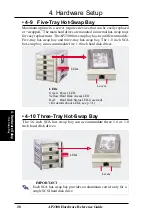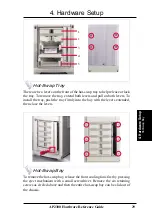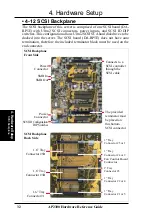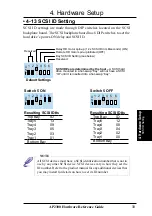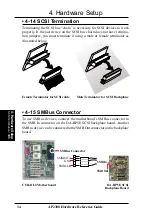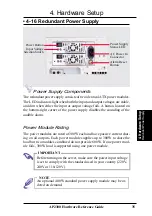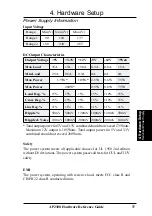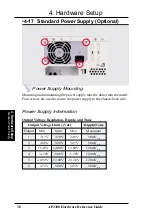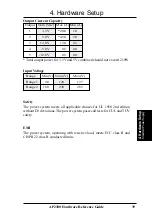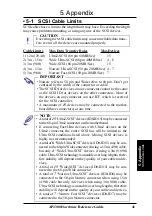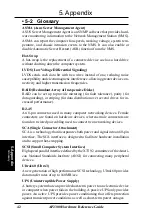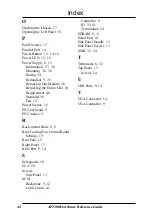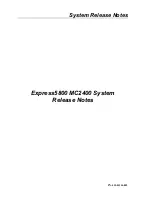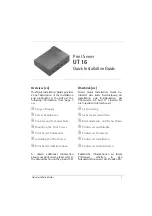
42
AP2300 Hardware Reference Guide
5. Appendix
5. Appendix
Glossary
• 5-2
Glossary
ASMA (Asus Server Management Agent)
ASUS Server Management Agent is an SNMP software that provides hard-
ware monitoring information to the Network Management Station (NMS).
ASMA can report the computer fan speeds, working voltage, system tem-
perature, and chassis intrusion events to the NMS. It can also enable or
disable Automatic Server Restart (ASR) function from the NMS.
Hot-Swap
A hot-swap is the replacement of a connected device such as a hard drive
without shutting down the computer system.
LVDS (Low Voltage Differential Signaling)
LVDS sends each data bit with two wires instead of one, reducing noise
susceptibility and electromagnetic interference, allowing greater device con-
nectivity and higher transmission frequencies.
RAID (Redundant Array of Inexpensive Disks)
RAID can be set up to provide mirroring (for fault tolerance), parity (for
data guarding), or striping (for data distribution over several drives for in-
creased performance).
RJ-45
An 8-pin connector used in many computer networking devices. Female
connectors are found on hardware devices, whereas male connectors are
found on twisted pair cabling used to connect two networking devices.
SCA (Single Connector Attachment)
SCA is a technology that incorporates both power and signal into an 80-pin
interface. The SCA interface is designed to facilitate hardware installation
and to support hot-swapping.
SCSI (Small Computer System Interface)
High speed parallel interface defined by the X3T9.2 committee of the Ameri-
can National Standards Institute (ANSI) for connecting many peripheral
devices.
Ultra160 (Ultra3)
A new generation of high performance SCSI technology, Ultra160 provides
data transfer rates of up to 160MB/sec.
UPS (Uninterruptible Power Supply)
A battery system that can provide short-term power to an electronic device
or computer when power fails in the building. A passive UPS only provides
power. An active UPS provides power conditioning that offers protection
against transient power conditions as well as short-term power outages.

